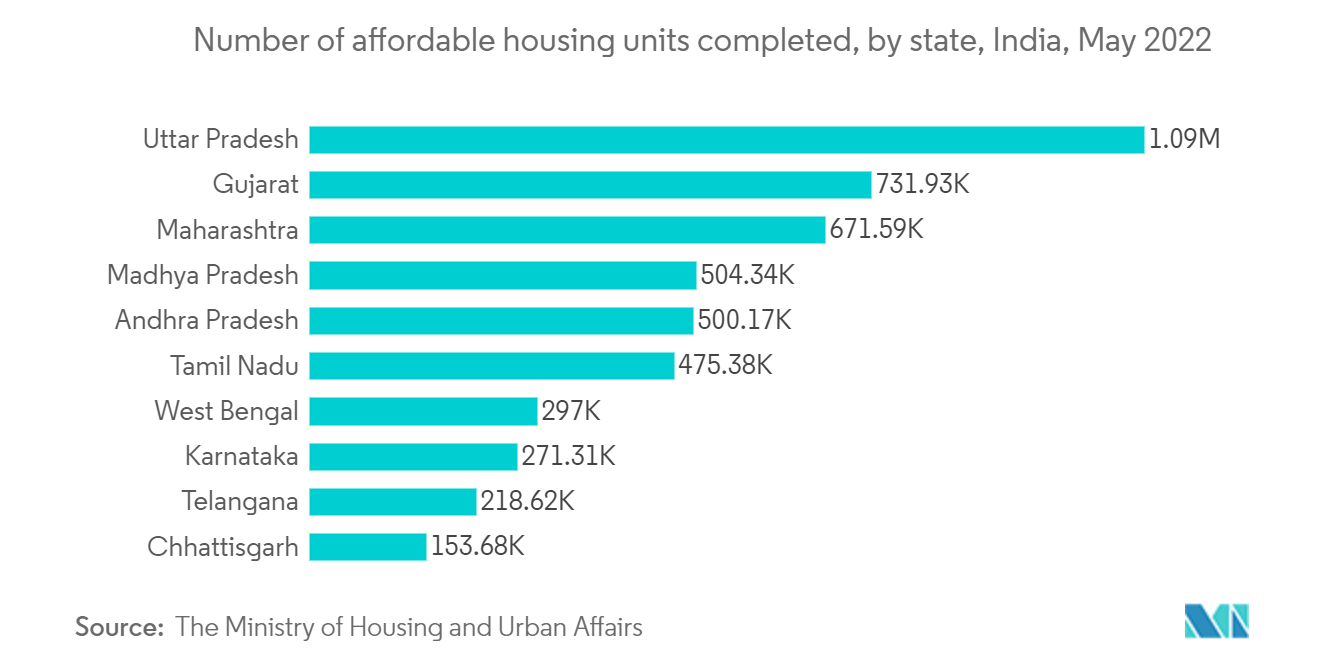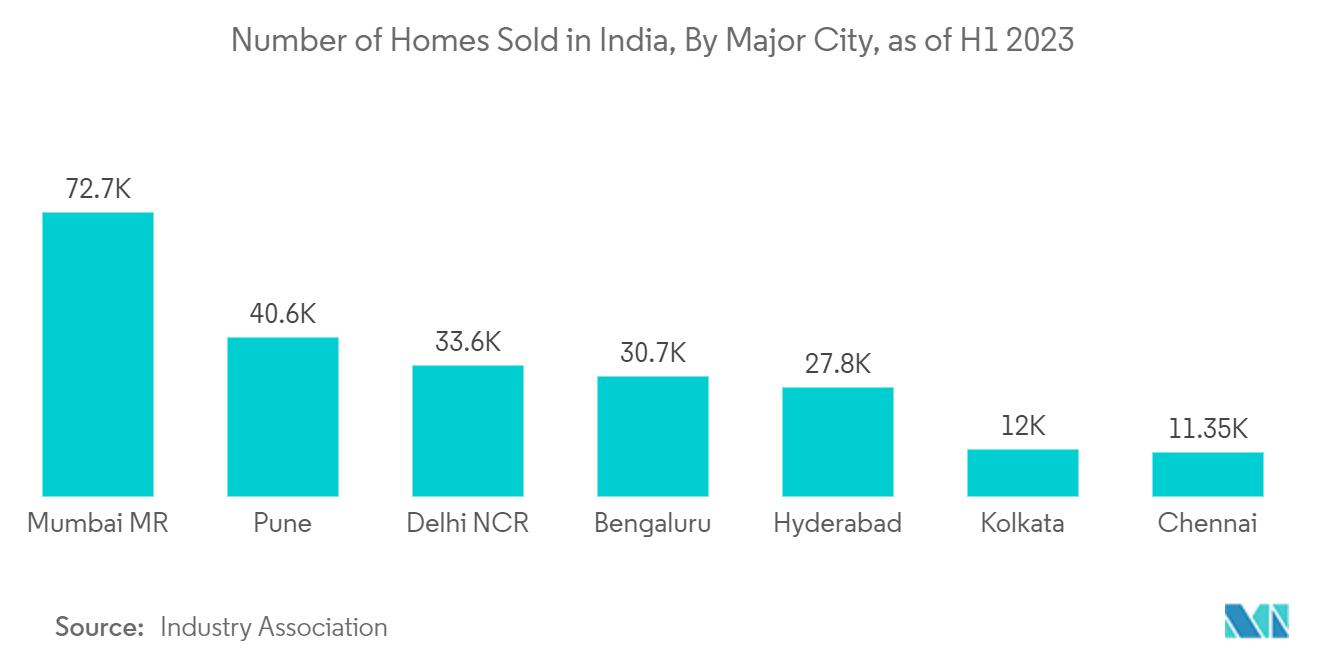Market Trends of India Residential Construction Industry
Need for Affordable Housing is Driving the Market
Indian governments, since independence have focused on the issue of affordable housing in the context of poverty reduction. In 2015, the government announced a housing program that aimed at providing a safe home to every Indian. Furthermore, the introduction of Real Estate Regulation Authorities in 2017 is meant to increase transparency in the market and strengthen the rights of buyers. As of May 2022, there were over one million housing units completed across the north Indian state of Uttar Pradesh within the Housing for All (HFA) program since 2014. In the financial year 2022, the government of India allocated 200 billion Indian rupees (USD 2.44 billion) for Pradhan Mantri Awaas Yojana-Gramin.
The national 2021 Budget, including INR 50,000 crore (USD 6111.43 billion) allocated to the Ministry of Housing and Urban Development (MoHUA) and the creation of a 3.5 billion USD fund to support the completion of stalled housing projects, there is strong government support for the housing sector at the national level. In India, where urbanization is predicted to increase from 33% to over 40% of the population by 2030, there will be a need for 25 million extra mid-range and inexpensive housing units, according to Invest India. In 2022, the total number of completed houses in urban areas of India under the Pradhan Mantri Awas Yojana (PMAY, The Prime Minister's Housing Plan) reached 5.4 million. The demand for housing facilities for the urban poor lies at around 11 million housing complexes in 2020.
Moreover, the industry has benefited from the push for policy that has resulted in legislation like the Real Estate Regulatory Authority (RERA), the introduction of Real Estate Investment Trusts (REITs), and SWAMIH (Special Window for Completion of Construction of Affordable and Mid-Income Housing Projects). It is anticipated that increased spending on residential projects by the state and central governments will continue to boost industry growth over the forecast period in the nation.

Increasing Investments in Residential Property Drives the Market
India has seen tremendous urban progress. It is estimated that by 2030, more than 400 million people will be living in cities in India. The demand for residential properties has been fuelled by India's expanding urban population, rising household incomes, and decade-long low loan rates, which have increased sales volume. In the first half of 2022, around 44 thousand housing units were sold in Mumbai, India's most demanding residential housing market. There was a total of 158,705 residential properties sold during the period.
In 2021, over 232 thousand housing units were launched on the residential market across India. Even though there is a big demand for housing in the country, residential launches have been on a comparatively high level over the past few years. Moreover, in 2021, Hyderabad recorded an increase in housing launches in the residential market of India by 179 percent. The national capital region of Delhi recorded 110 percent more launches than in 2020.
Mumbai Metropolitan Region recorded the highest residential property launches in Q1 2022. The city alone accounted for 92 percent quarter-on-quarter and 126 percent year-on-year change and launched more than 28,000 new housing units in Q1 2022 as against 12,000 in Q1 2021. In the first quarter of 2022, East Pune saw the maximum number of new residential units and accounted for 28 percent of the total new project launches. The financial and technology hub of India, Gurugram, launched about 3,800+ new residential units in Q1, 2022 (witnessing quarterly growth of 35 percent). The city consists of five major zones, including Golf Course Road, New Gurgaon, Central Gurgaon, Southern Peripheral Road, and Dwarka Expressway.
Hyderabad is one of the top contributors, accounting for an 83 percent year-on-year increase in the number of new launches in the recent quarter. Of all zones in the city, West Hyderabad furnished the maximum number of houses, which accounted for 52 percent of the total launches in the city. This was followed by North Hyderabad, which comprised about one-third of the total new projects launched in the city during Q1 2022. East Bengaluru witnessed the highest number of new residential property launches with 52 percent share, followed by North Bengaluru.


